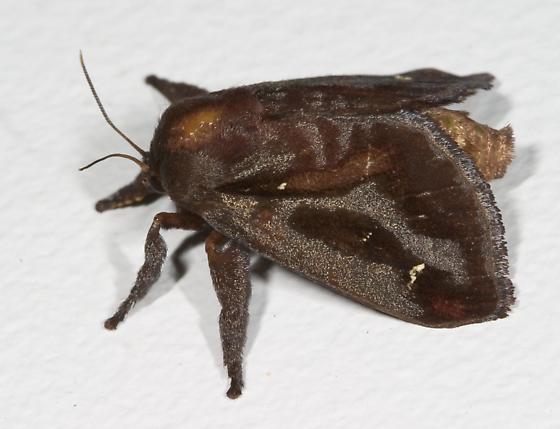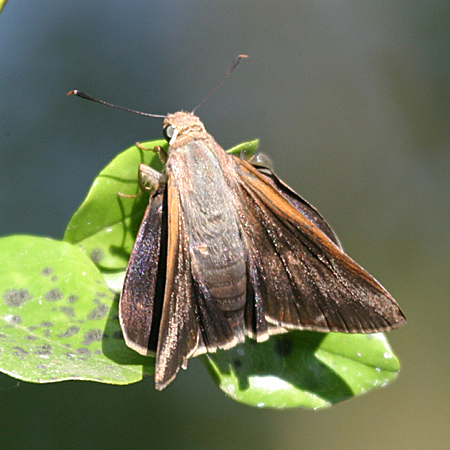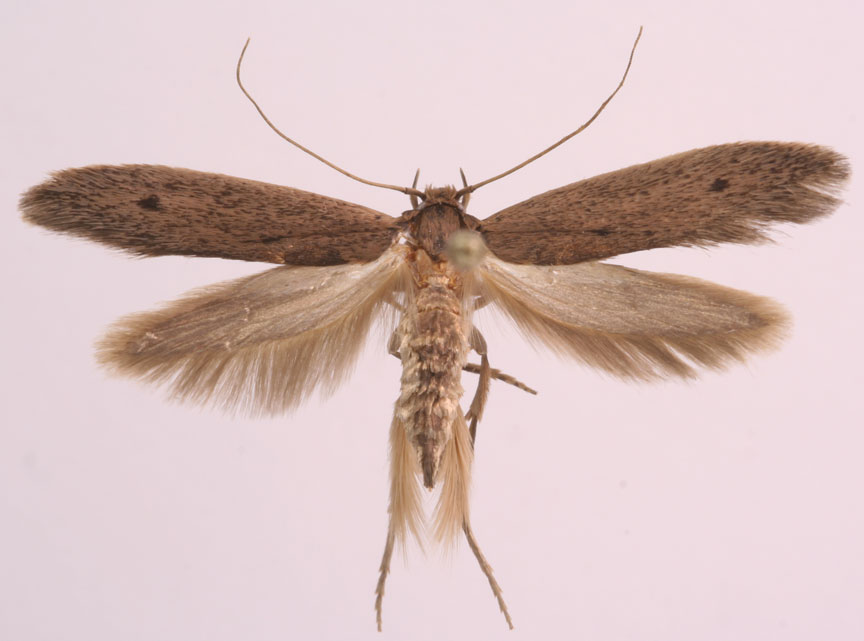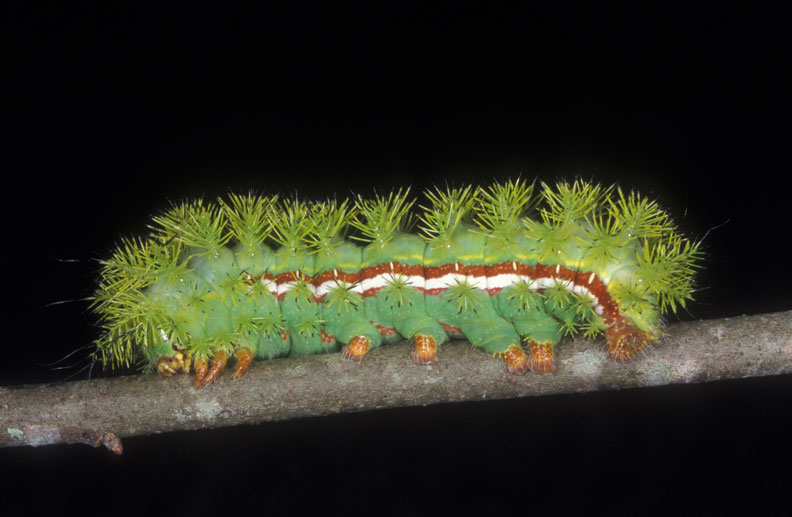Moths and Butterflies (Lepidoptera)
|
saddleback caterpillar, Acharia stimulea, adult female; Photo © Troy Bartlett, BugGuide |
|
monk skipper, Asbolis capucinus, adult; Photo © Tom Murray, www.pbase.com/tmurray74 |
|
saddleback caterpillar, Acharia stimulea, larvae; Photo © Troy Bartlett, BugGuide |
|
monk skipper, Asbolis capucinus, larvae; Photo © Alan Chin-Lee, www.alanchinlee.com |
|
banana moth, Opogona sacchari, adult; Photo by Lyle Buss,University of Florida |
|
io moth, Automeris io, adult; Photo © Alan Chin-Lee, www.alanchinlee.com |
|
banana moth, Opogona sacchari, larva; Photo by A. van Frankenhuijzen, Plant Protection Service, www.insectimages.org |
|
io moth, Automeris io, larva; Photo by Lyle Buss, University of Florida |
Rank & taxon
Order Lepidoptera
Description
Adult: Moths and butterflies can range widely in size, with wingspans ranging from about 4 mm to nearly 30 cm. Lepidopterans are generally covered in small, overlapping scales on both their bodies and their wings and have an elongated, tube-like mouthpart known as a proboscis. The forewings are generally triangular in shape while the hindwings are fan-shaped. Moths and butterflies vary widely in color and pattern, from plain and drab to ornate and colorful. Butterflies differ morphologically from moths chiefly in that butterflies have clubbed antennae, and female moths usually have long, slender antennae while male moths usually have feathery ones.
Larva: Larvae vary widely in appearance within the order, though they all share the same caterpillar-like appearance. They are soft-bodied, cylindrical in shape with a well-developed head, chewing mouthparts, and 2-8 pairs of fleshy abdominal prolegs in addition to three pairs of thoracic true legs.
Distribution
Worldwide; over 180,000 described species in 128 families. Over 11,000 species have been described from North America.
Biology/life cycle
Moths and butterflies are holometabolousholometabolous:
with complete metamorphosis, including egg, larval, pupal, and adult phases
, undergoing complete metamorphosis. Their life cycle normally consists of an egg, larva (commonly called caterpillars), pupa (cocoon in moths and chrysalis in butterflies), and the imagoimago:
the adult stage of an insect
or adult. Eggs are usually laid on or near the host plant their larvae will feed on. The larvae eat every part of the plant, and are usually considered pests on their host plant. A few species are carnivorouscarnivorous:
feeding upon other animals
or parasiticparasitic:
living in close association with another species (host), feeding upon it while providing no benefit
. Larvae generally develop rapidly, resulting in several generations per year, but a few species may take up to several years to develop. Larvae typically go through 5-7 instars before pupating and emerging as the imagoimago:
the adult stage of an insect
. Most Lepidoptera are terrestrial, but a few species are aquatic, with all stages save the adult living in water. Butterflies are generally differentiated from moths primarily by their flight period: butterflies fly during the day, and moths fly at night, but exceptions do occur.
Hosts
Palms: a wide variety of palms
Other: a wide variety of plants
Representative taxa on palms
The banana moth, Opogona sacchari, is a primary pest of many plants, including palms in Florida. It attacks damaged tissues, then proceeds to feed on surrounding healthy tissues.
The io moth, Automeris io, is a polyphagous species commonly found on palms in southern Florida and is occasionally considered a pest. Native to the eastern US, the larvae feed on leaf tissue, and they may pose a hazard to nursery and landscape workers due to their stinging hairs.
Additional comments
Lepidoptera is the most important order of defoliating insects on palms. All but a small minority are phytophagousphytophagous:
feeding upon plant matter
in the larval stage.
A number of the larvae of important pest species on palms bear poisonous spines called urticatingurticating:
stinging
setae, which may cause pain, inflammation, and swelling to those who come in contact with the caterpillars.










